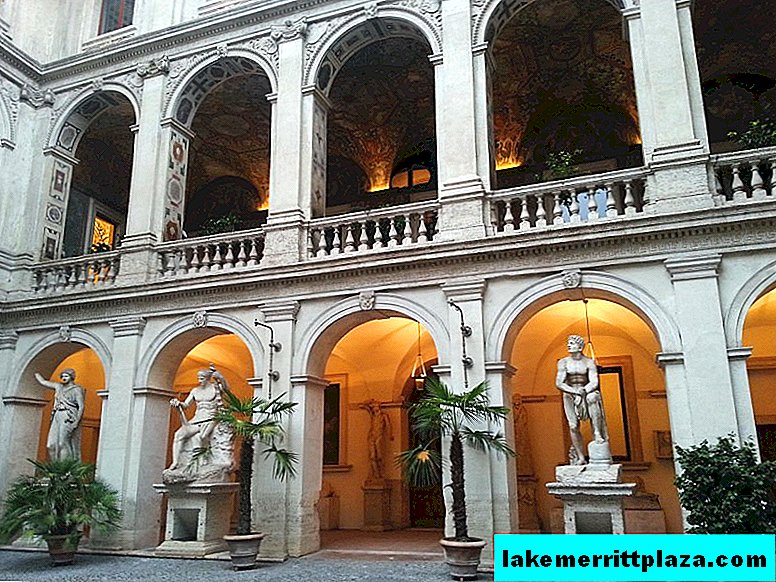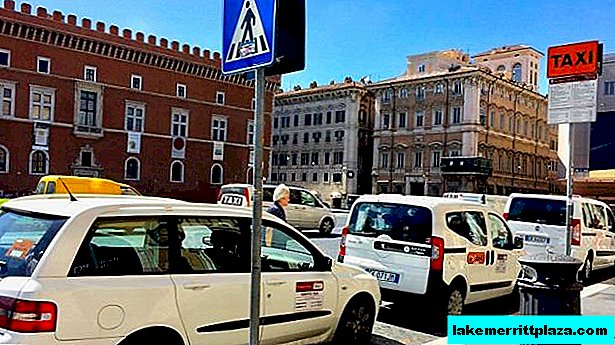The National Museum of Rome is one of the main centers of historical and artistic culture of a united Italy. Here is an amazing collection of ancient sculptures, mosaics, murals, coins. The museum is not popular with tourists, but in vain.

National Museum of Rome, photo by Richard Mortel
The National Roman Museum (Museo Nazionale Romano) is a complex of four objects dedicated to Roman history:
- The Baths of Diocletian,
- Palazzo Massimo
- Palazzo Altemps,
- Crypt Balby.
It is one of the best museums for the arrangement of expositions, organization of work, and convenience for visitors. The National Museum of Rome was established in 1889. It brought together numerous exhibits of the ancient period. The collection is based on the collection of the Kircheriano Museum, which in 1901 transferred to the collection of the Villa Ludovisi. At first, all the exhibits were in the premises of a former monastery in the territory of Therm Diocletian. In 1990, the museum was reformed, and the collection was dispersed over 4 objects. Today, the National Museum of Rome has one of the richest collections of ancient sculpture.
 The Baths of Diocletian
The Baths of Diocletian
 Palazzo massimo
Palazzo massimo
 Palazzo Altemps
Palazzo Altemps
 Crypt Balbi
Crypt Balbi
The Baths of Diocletian

Baths of Diocletian, photo by HEN-Magonza
Terme diocletian (Terme di Diocleziano) - the ruins of ancient Roman baths near the Republic Square. They were erected in 298-305. In 537, the Goths destroyed the aqueduct, and the baths ceased to exist. In 1561, Pius IV commissioned Michelangelo to reconstruct the territory of the term. The Caldarius was rebuilt into the church of Santa Maria degli Angeli e dei Martiri; the structure of the Carthusian monastery appeared. Since 1889, some premises of Term Diocletian have been occupied by the historical part of the collection of the National Museum of Rome with a collection of Greek and Roman art. On three floors there are various artifacts telling about the development of the Roman state from ancient times. In the halls there are collections of inscriptions and sculptures.
Term of Diocletian: Viale Enrico de Nicola, 76, 00185 Roma,
Website: www.coopculture.it.
Palace of massimo

Mosaic photo by David Morgan-Mar

Frescoes from the Libyan villa, photo by Devon D'Ewart
The Palazzo Massimo alle Terme was built in 1883-1887. architect Camilo Pistrucci. In the basement there is a numismatic collection. Two floors of the palace are occupied by a collection of antique sculptures, on the third - mosaics and antique paintings. Frescoes on which trees, flowers and birds are painted are remembered from the winter triclinium from the villa of Augusta's wife, Libya. The pride of the museum are the frescoes of Villa Farnesin. The halls exhibit sarcophagi.

Seated boxer, photo @@@@@
"Sitting Boxer" - one of the masterpieces, a statue of the Hellenistic era of the 4th century. In addition to artistic merits, she is a model of metalworking.
Massimo Palace Address: Largo di Villa Peretti, 2, 00185 Roma,
Website: www.museonazionaleromano.beniculturali.it.
Altemps Palace

Palazzo Altemps mctl photo
In the Palazzo Altemps there are collections of objects of art: the collection of Cardinal Ludovisi, consisting of 104 sculptures of the ancient period; Egyptian collection, collections of the princes Mattei and the Austrian Cardinal Altemps.
Altemps Palace was built according to the design of Melozzo da Forlì for Girolamo Riario in the 15th century. on the Champ de Mars, next to Piazza Navona.

Throne of Ludovisi, photo edk7
The throne from the collection of Ludovisi is a masterpiece of Greek art of the 5th century. He was part of the altar of the temple of Aphrodite in Lokra. On the central bas-relief of the throne, we see Aphrodite being born from the foam of the sea.

Hall with the Pergamon sculpture group Suicide of the Gall, photo M.Pardy
The Gall Ludovisi is a marble copy of the bronze group of a large triumphal monument, which was erected by Attalus I in the Pergamon temple of Athens c. 220-230 years. Gall kills himself and his wife. The sculpture is made with detailed detail and expression.

Sarcophagus "Grande Ludovisi", photo by GianJames
Another masterpiece of the Ludovisi collection is the sarcophagus of “Grande Ludovisi” (II-III centuries), its height is 1.5 m.
Altemps Palace Address: Piazza di Sant'Apollinare, 46, 00186 Roma,
Website: www.museonazionaleromano.beniculturali.it.
Crypts Balbi

Balby Crypts, photo by Christopher Mendes
The exposition of Crypta Balbi (Crypta Balbi) stores exhibits of archaeological excavations and is dedicated to the history of the development of Rome.
Balbi Crypts Address: Via delle Botteghe Oscure, 31, 00186 Roma,
Website: www.museonazionaleromano.beniculturali.it.
Working hours
VT-Sun from 09:00 to 19:45;
Mon day off.
Tickets
Entrance to one of the 4 museums - € 10.00; preferential - € 5.
If the museum hosts an exhibition, then the ticket costs - € 13.00; preferential - € 8.
The combined ticket includes visits to all museums (Thermae Diocletian, the palaces of Massimo and Altemps, the Balbi crypt) and is valid for 3 days.
The total cost of the combined ticket is € 12.00; preferential - € 6.
If exhibitions are held, the combined ticket costs € 15.00; preferential - € 9.
When buying an online ticket on the site, the cost increases by € 2.
Admission is free until age 18.
Every first Sunday of the month - admission is free.
Buy tickets in advance online:
Buy a ticket →







